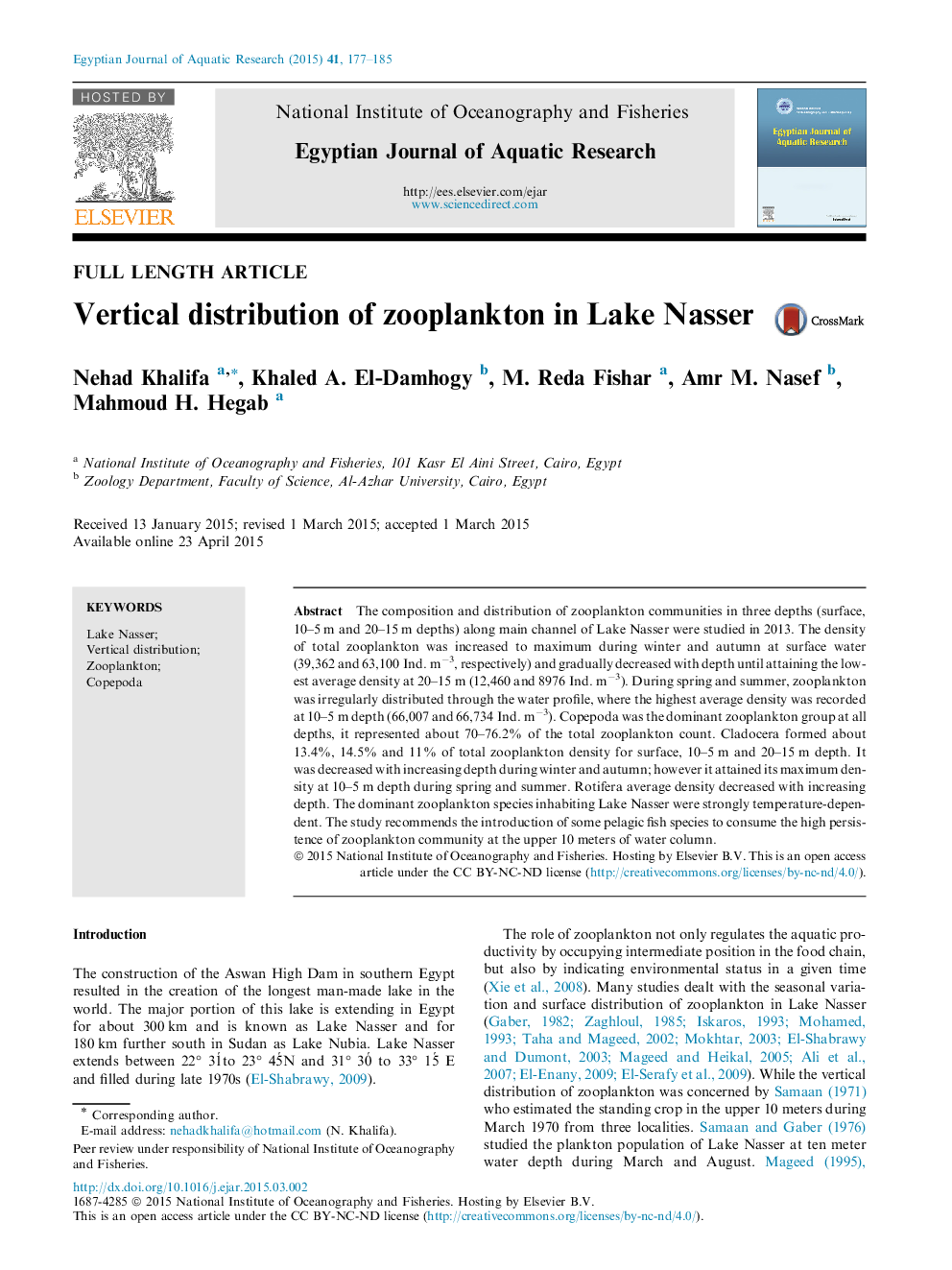| Article ID | Journal | Published Year | Pages | File Type |
|---|---|---|---|---|
| 4493078 | The Egyptian Journal of Aquatic Research | 2015 | 9 Pages |
The composition and distribution of zooplankton communities in three depths (surface, 10–5 m and 20–15 m depths) along main channel of Lake Nasser were studied in 2013. The density of total zooplankton was increased to maximum during winter and autumn at surface water (39,362 and 63,100 Ind. m−3, respectively) and gradually decreased with depth until attaining the lowest average density at 20–15 m (12,460 and 8976 Ind. m−3). During spring and summer, zooplankton was irregularly distributed through the water profile, where the highest average density was recorded at 10–5 m depth (66,007 and 66,734 Ind. m−3). Copepoda was the dominant zooplankton group at all depths, it represented about 70–76.2% of the total zooplankton count. Cladocera formed about 13.4%, 14.5% and 11% of total zooplankton density for surface, 10–5 m and 20–15 m depth. It was decreased with increasing depth during winter and autumn; however it attained its maximum density at 10–5 m depth during spring and summer. Rotifera average density decreased with increasing depth. The dominant zooplankton species inhabiting Lake Nasser were strongly temperature-dependent. The study recommends the introduction of some pelagic fish species to consume the high persistence of zooplankton community at the upper 10 meters of water column.
